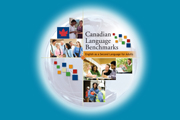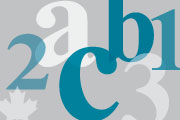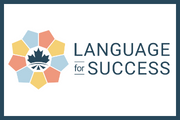
Collaboration
Discover the language in Collaboration
Collaboration requires communicating with others in a way that fosters respect and cooperation, while working towards a common goal. It involves listening, speaking, reading and writing, often in combination; for example:
- Listening and responding to others using verbal and non-verbal indicators to convey interest, comprehension and empathy.
- Conveying appreciation for others’ contributions and work.
- Requesting and responding positively to others’ input.
- Using communication strategies, such as indirect language, to avoid making commands and to convey flexibility and a shared decision-making power structure.
- Contributing ideas for reaching a common goal.
- Expressing views and ideas while conveying respect for and interest in others’ opinions.
- Asking questions to understand others’ ideas and points of view.
- Communicating intentions, goals and timelines to others, and informing them about errors or setbacks.
- Expressing and responding to opinions respectfully and without judgement; agreeing and respectfully disagreeing.
- Giving and receiving feedback while being receptive to others’ opinions.
Explore work-related examples at each CLB stage
The Canadian Language Benchmarks (CLB) describe communicative ability in English as a Second Language (ESL). The CLB organize 12 benchmarks into three stages of ability: Stage I (Basic), Stage II (Intermediate) and Stage III (Advanced).
Learners may already possess Collaboration skills but lack the English language to demonstrate them. For this reason, there is no direct correspondence between Collaboration and CLB levels.
The examples below show the language involved in demonstrating Collaboration.
![]()
Approach a more experienced worker and ask for help with a task; indicate understanding or non-understanding.
![]()
Listen to a co-worker’s update on a shared task; comment or pose questions to indicate support and understanding.
![]()
Listen to brief instructions to accomplish a simple shared task; ask questions or request repetition or rephrasing to understand responsibilities.
![]()
Express a preference to a co-worker about a routine policy, such as scheduling; ask for their view.
![]()
Communicate appreciation for a co-worker’s efforts. (Good work. I like what you’ve done. That’s a great idea.)
![]()
Read a short shift-change message from a co-worker about tasks completed; write a short end-of shift update.
![]()
Interact in a team; follow straightforward instructions, seek clarification about responsibilities, invite members of the group to share their views and help accomplish the task.
![]()
Give a short summary of the main points of a goal-setting meeting to a co-worker who was absent.
![]()
In a staff meeting, convey appreciation for a co-worker’s idea before expressing your own; respond positively to questions and requests for clarification.
![]()
Canvass co-workers for their views on a team-building event; summarize input to make a recommendation to management.
![]()
Read a co-worker’s suggestion to improve a work process; thank the co-worker and identify how the suggestion will be implemented.
![]()
Write a message to co-workers to suggest a sympathy gesture for a colleague who is ill and ask for input.
![]()
Write a polite message to an employee asking them to complete a task; convey awareness of their workload and flexibility as to when and how the task is completed.
![]()
Discuss a shared task in a group meeting; summarize points reached to help focus the discussion and propose next steps to move it forward.
![]()
Facilitate a team brainstorming session to explore solutions to a workplace problem.
![]()
Show interest and sensitivity to different perspectives in a group working on a shared task; acknowledge contributions, express concerns, convey empathy, and handle disagreements tactfully.
![]()
Co-ordinate a group that is working on a project; formulate and revise instructions, provide clarification, and evaluate ideas from team members.
![]()
Review a draft of a collaboratively written report; offer suggestions to improve structure and flow.
![]()
Understand implied attitudes, bias, and opinions expressed in written messages from co-workers about a shared task; respond tactfully by clarifying misconceptions, acknowledging differences in perspectives, and focusing on the shared goal.









